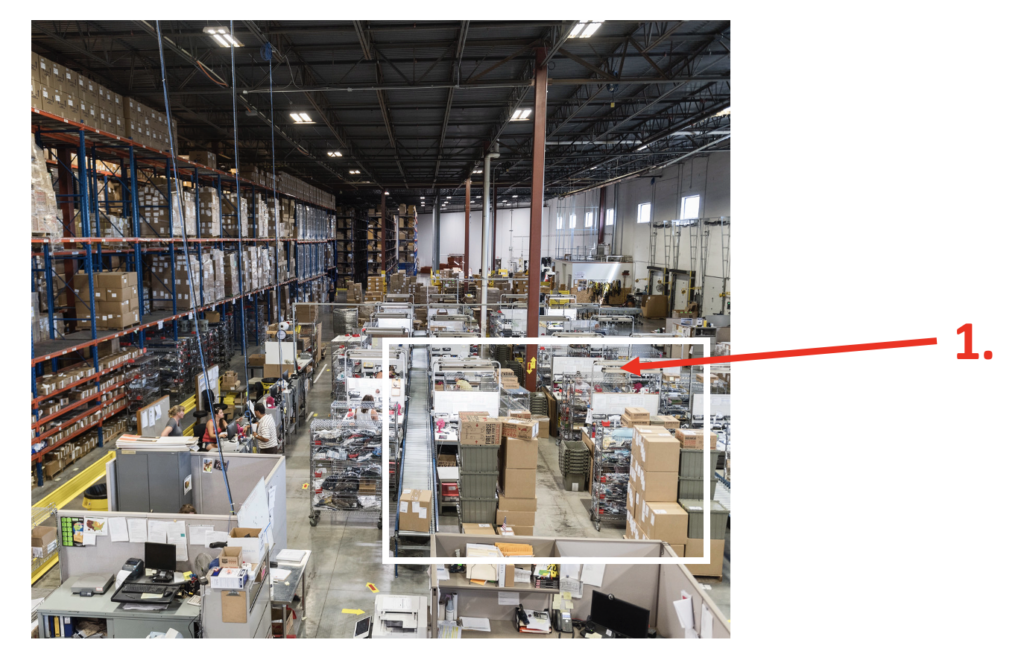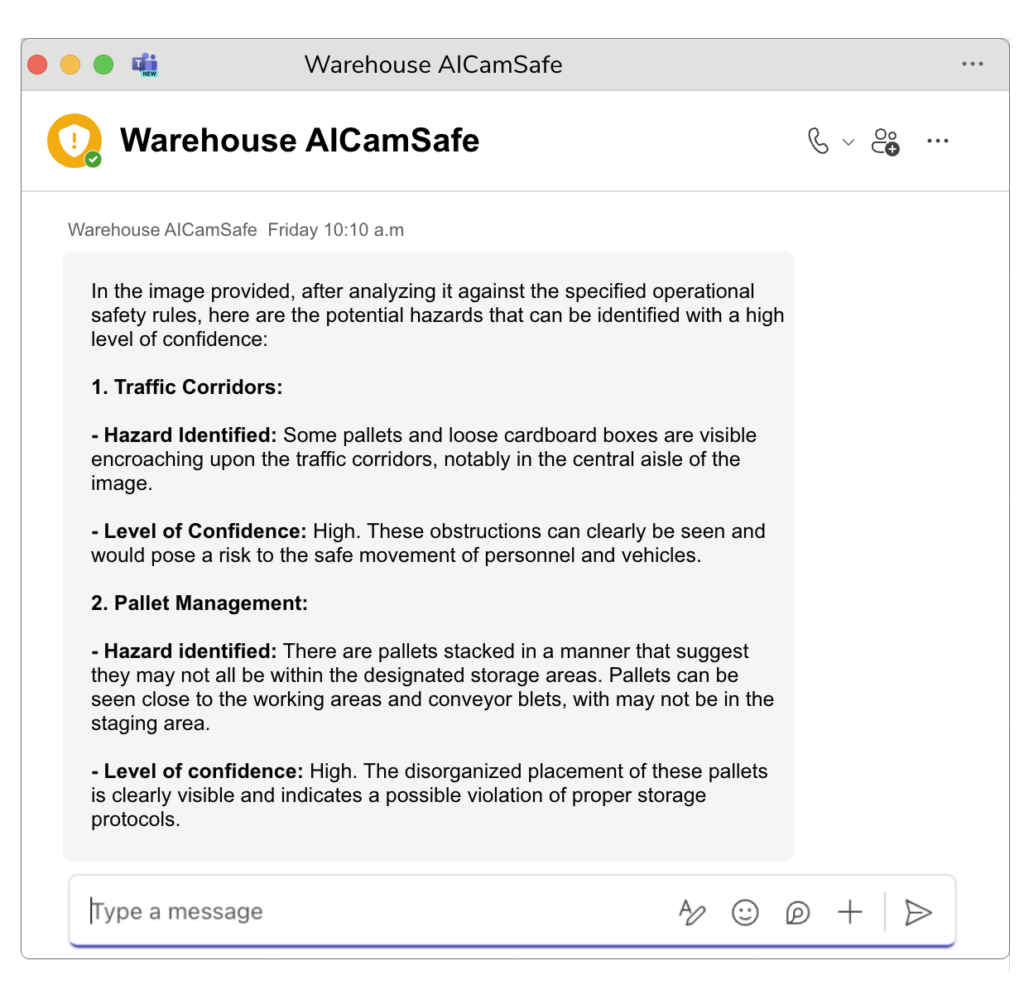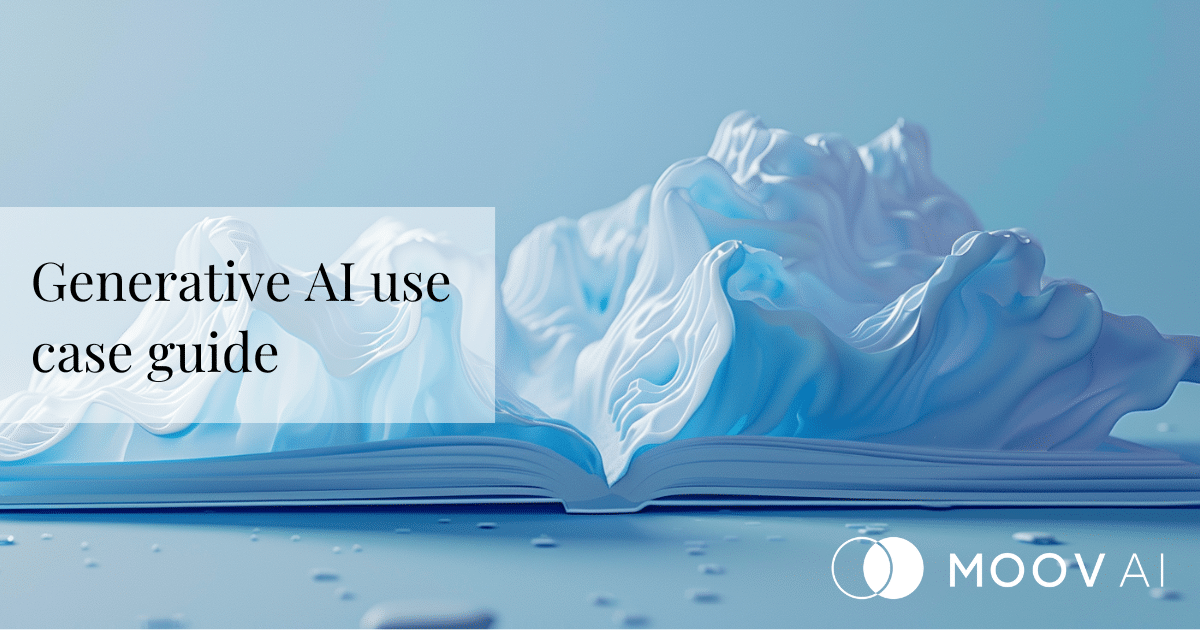Warehouses are areas where health and safety risks can be high due to the presence of heavy machinery, chemicals, and material handling activities. To improve worker safety and ensure regulatory compliance, using artificial intelligence (AI) to monitor and detect health and safety issues from surveillance footage becomes a solution. These systems have the ability to generate tailored simulations, predictions, and recommendations to create safer and more efficient work environments.
From images from surveillance cameras installed in the warehouse, the AI system can:
- Analyze images and detect anomalies or dangerous behaviors.
- Identify if an aisle is obstructed by pallets or boxes, if an employee is not wearing a helmet or protective gloves, or if there is a liquid spill that could cause injuries.
- Identify if your inventory is stored safely, for example, quickly warn that a stack of pallets is moving and will eventually collapse


Such a system can generate regular reports on detected incidents, allowing managers to identify trends and areas requiring improvement. These reports can also be used for safety audits and to demonstrate compliance with current regulations.
Applications of health and safety monitoring in industries
The use of generative AI for health and safety monitoring varies across industries due to specific risks and unique work environments. Here are some use cases across different industries:
Manufacturing industry: Monitoring the use of protective equipment
AI can be trained to recognize different types of PPE (personal protective equipment), such as helmets, goggles, gloves, safety boots, etc. Video feeds from surveillance cameras can be analyzed to detect the presence or absence of these equipment on employees. Companies can thus reduce the risk of accidents by ensuring that employees are constantly wearing their PPE.
Construction: Fall detection
Fall detection is an application of generative AI in the construction sector, where such accidents are common. This application ensures faster detection of falls, allowing for immediate interventions, reducing the severity of injuries. In addition to detecting falls, AI can analyze surrounding contexts, such as the presence of guardrails or safety nets. Monitoring facilitates compliance of operations with safety standards, thus avoiding sanctions and penalties.
Health: crowd management in waiting rooms
Generative AI can be extremely effective for crowd management, especially in environments like waiting rooms where congestion and panic situations can occur. By detecting and preventing congestion, AI helps reduce the risk of panic and associated accidents. By anticipating crowds, managers can optimize the use of waiting rooms and adjacent spaces. AI data can be used to plan staff attendance and the opening of additional facilities as needed.
Transport and logistics: monitoring of loading docks
Loading dock monitoring to ensure compliance with safety protocols during loading and unloading of goods. Generative AI can identify violations during loading procedures from defined safety protocols and surveillance imagery. Using such a system allows for the rapid detection and treatment of violations, ensuring a safe and compliant work environment. In addition to reducing the risk of accidents on loading docks, this technology reduces the risk of damage to goods.
The benefits
Applied generative AI can transform health and safety management, making processes more responsive, accurate, and based on real-world visual data.
Analyzing images and videos to automatically detect potential hazards, such as missing safety equipment, obstacles in traffic paths, or unsafe behaviors, enables rapid interventions to prevent serious accidents.
AI can compare images captured in the workplace with established safety standards to ensure protocols are being followed.
Real-time monitoring
Surveillance systems powered by generative AI can analyze video feeds from security cameras in real time to detect anomalies or dangerous situations. This enables immediate response to potential incidents.
Incident reconstruction
In the event of an accident, AI can generate detailed reconstructions based on available images and videos. This helps to understand the causes of the incident and take measures to avoid similar situations in the future.
Improved inspections
Drones equipped with cameras and generative AI can inspect areas that are difficult to access or dangerous for humans. Analyzing the captured images can identify structural failures, leaks, or other risks without putting inspectors at risk.
Post-event analysis
After an incident, AI can analyze available images and videos to provide detailed insights into the causes and circumstances of the event, helping to develop future prevention strategies.
Customizing Security Audits
AI can analyze workplace images to customize safety audits based on the specifics of each site. This helps identify specific risks and propose tailored solutions.
Proactive risk management
By combining image analysis with other data (such as incident histories and environmental conditions), AI can generate predictive models to anticipate and proactively manage risks.
Automated documentation and reporting
Generative AI can automate the creation of detailed reports from analyzed images, making it easier to document safety inspections and audits.
It is important to consider the risks and limitations associated with the use of these LLMs. The use of generative AI tools for business is not negligible for safe professional use. Learn more about the practical applications of generative AI in the manufacturing industry-> Read the full article
Do more with less
One of the key benefits of generative AI is its ability to run continuously, giving you 24/7 expertise to analyze your environments, identify areas for improvement, and propose solutions. This technology optimizes your resource management by providing real-time analytics and accurate recommendations, allowing you to prioritize tasks more strategically.
Generative AI also facilitates collaboration and communication within your teams by ensuring that all stakeholders have the information they need to complete their tasks efficiently. By automating the creation of tasks from photos or videos, AI ensures smooth coordination and improves operational efficiency.
By integrating generative AI into your daily processes, you not only optimize the distribution of tasks, but also strengthen decision-making and the overall efficiency of your operations.
Want to explore more use cases for generative AI? This article is part of our comprehensive guide that covers many potential applications for this technology across various industries. To learn more and find use cases for your field, read our guide now.
Moov AI uses generative AI in the creation of this blog.
Here’s how our marketing team is using generative AI to improve this blog. We used a combination of ChatGPT and Gemini to generate examples of use cases across various industries, based on a real-world case developed by Moov AI. Some of the text was generated and corrected with the help of generative AI. The blog’s header image was also created using the following prompt: An abstract l representation of a health and safety analysis in a warehouse, creative security camera, creamy, wavy , bobbly cloud and geometrics forms , 3D highlighting safety protocols, and a color scheme of soft green and orange color in Midjourney. Then, we used Adobe Firefly, integrated via Photoshop beta, to adjust the image to the correct format.

Olivier is co-founder and VP of decision science at Moov AI. He is the editor of the international ISO standard that defines the quality of artificial intelligence systems, where he leads a team of 50 AI professionals from around the world. His cutting-edge AI and machine learning knowledge have led him to implement a data culture in various industries.
